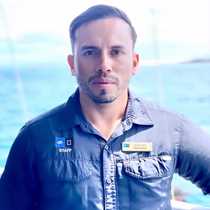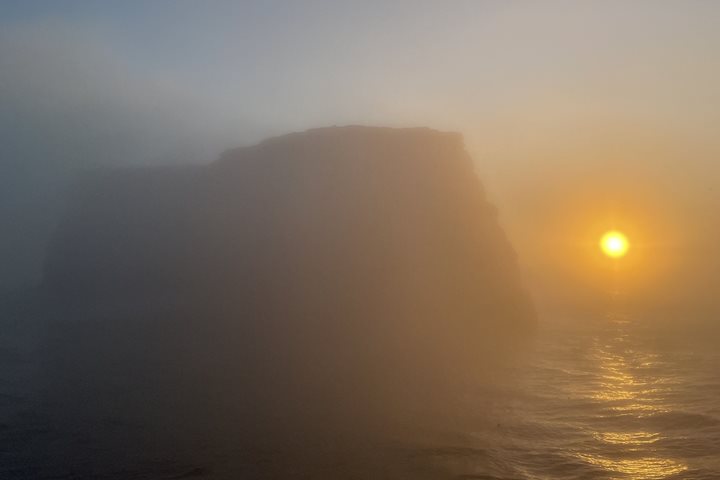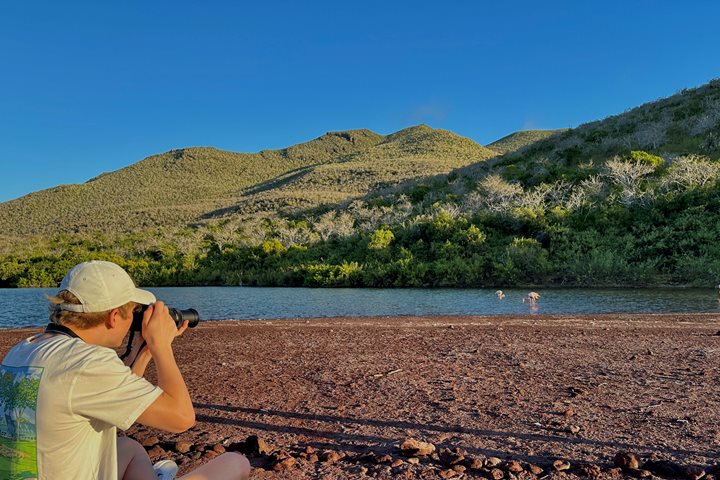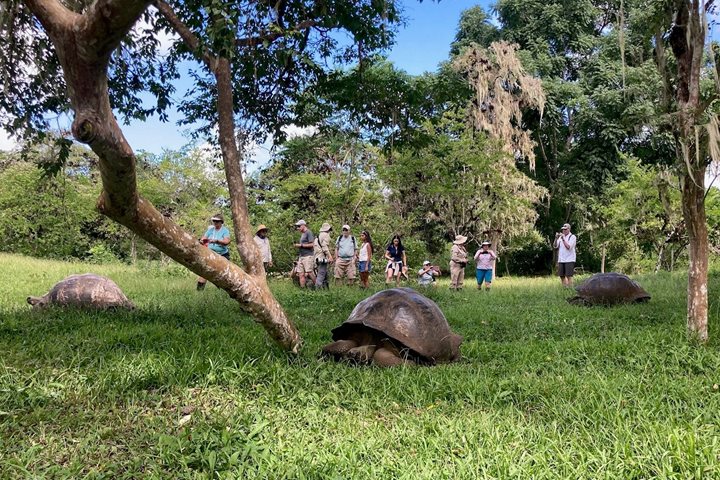We woke up to a view of a large, collapsed caldera mostly made of tuff. San Cristobal is the second oldest island in the Galapagos. Throughout the years, this island was visited by whalers and buccaneers in search of fresh water and giant tortoises as a source of meat. San Cristobal was the first island Charles Darwin visited when he came to the Galapagos.
After breakfast, we made a wet landing on a golden beach to explore the plateau of Punta Pitt. After climbing an old streambed, we arrived at a much flatter area. We found blue-footed boobies nesting along the trail and red-footed boobies nesting on the bushes. This was quite an opportunity to photograph both species. The geology of this site is breathtaking, and the vegetation contrasts with the colors of the lava and the ash cones. After the hike, we went swimming off the beach. Some of us were lucky enough to encounter a couple playful Galapagos sea lion pups in the water.
After lunch, National Geographic Islander II repositioned to another visitors’ site known as Cerro Brujo. The water was turquoise, and the sand was white. The beach looked like it was in the Caribbean, but it was full of wildlife. Sea lions rested on the sand, and blue-footed boobies fished along the coast. We went swimming and enjoyed the rest of the afternoon. After we returned to the ship, we navigated towards Kicker Rock, a satellite islet of San Cristobal. We enjoyed a beautiful farewell sunset with a glass of champagne in hand.







